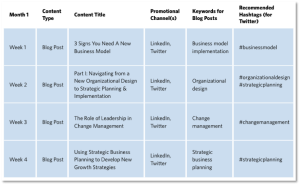
Employers of all kinds are experiencing resignations in numbers unlike any seen before. While this phenomenon is getting a lot of attention from media outlets, organizations need to be focusing on keeping those who have not walked out the door.
Communication has always been the key to creating an engaging, participative, and productive workplace culture. But in today’s particular and peculiar economy, with such unprecedented employee movement, a different approach is warranted to keep people from looking to greener pastures elsewhere. Executives of large, remote-working companies have pointed out that many knowledge workers’ daily routines consist of communication.
Understanding today’s employee concerns, wants, and needs requires a special kind of facilitated conversation, a kind that most managers and supervisors rarely incorporate in their management style, but must learn to do if employee retention is the goal.
Interactive, facilitated conversations with employees can keep communication channels open and demonstrate that management is engaged. They ensure employees have what they need to do the best work they can and that their social and emotional concerns are addressed. A facilitated conversation is thoughtful and planned but open in terms of its outcome. It depends upon sincere questions with the goal of understanding rather than directing or persuading. “Facilitation” comes from the word “facile,” meaning, “to make easy.” That is the goal, after all: an easy conversation without annoyances. It is a guided discussion to an unknown destination whereby the employee experiences safety, authentic interest, and a willingness to understand. A facilitated conversation requires training, planning, self-revelation, delicate probing, and follow-up.
Facilitated communication’s elements and applications
Training and educating managers and supervisors how to conduct facilitated conversations is often the first item to fall off the budget lines in times of difficulty and disruption, which can impact a workforce. This is unfortunate because these are the times leaders need all the extra skills they can learn and muster. So, deciding to incorporate facilitated conversations in an organization to increase employee retention needs thoughtful preparation on the part of senior leadership. Giving them specific education and training from experts is even better—but not being able to do that should not be an excuse to default to business as usual.
Once managers have learned and practiced facilitated conversations, they can begin the planning process with their employees. There are a few key elements of facilitating exchanges. For instance, there must be a chance for both the employee and the manager to think about their goals for the conversation, even before scheduling a meeting. Creating an agenda that incorporates open-ended questions can help trigger reflection. The goal of planning is not action, but to generate thought. Giving employees paid time during the workday to think about this demonstrates sincerity and emphasizes that this is as important as their regular work.
During the conversation, focused care and interest are critical. One way of doing this is self-revelation on the part of the manager to make the conversation more open, authentic, honest, and safe. A manager demonstrating vulnerability shows a willingness to acknowledge the difficulties pretty much everyone has faced over the two years of COVID-19. It is everywhere, affecting everyone. That said, it cannot be all about the manager. There needs to be just enough self-revelation to open up a safe and authentic space for the employee to engage.
Delicate probing questions are designed to elicit from employees what’s going on with them, what challenges they face, and what they need to address them. Canned or vague questions won’t do. Beginning with specific yet light, open-ended questions allows and encourages employees to speak truthfully, although it might take them a while to open up at first. It helps to use the planning results as a guide. Probing the answers delicately rather than challenging requires a special touch. This means carefully listening, thinking before responding, and looking to understand the employee’s perspective without judgment.
Lastly, if employees are going to feel their needs and concerns are taken seriously, someone has to be actually empowered to take action that addresses those concerns. If employees don’t see any actions being taken after the conversations, their cynicism will only grow. So, before starting this effort, managers and supervisors have to be empowered to make decisions and follow-up on them. When an issue just cannot be solved as an employee hoped, another facilitated conversation may be in order. In this case, the manager should clearly explain the limitations surrounding the issue and the reasons for them. Transparency is critical as it demonstrates trust. That opens the opportunity to discuss potential alternative solutions.
Carrying out facilitated conversations is an extremely effective way to identify and address pragmatic problems that may be affecting employees’ work. More important, they can help management identify issues relating to employees’ social and emotional well-being. By using facilitated conversations to cover the full range of potential concerns, organizations can boost the engagement, motivation, and thus the productivity of both long-time employees whom they want and need to retain and inspire.
Rebecca Weintraub is an emerita clinical professor of communication and emerita founding director of the online master of communication management program at the Annenberg School for Communication and Journalism at the University of Southern California.
Steven Lewis is an entertainment industry strategist and award-winning documentary filmmaker. Rebecca Weintraub and Steven Lewis are the coauthors of InCredible Communication, which includes their combined experience and knowledge on the art of effective business communication.
Fast Company , Read Full Story
(21)









